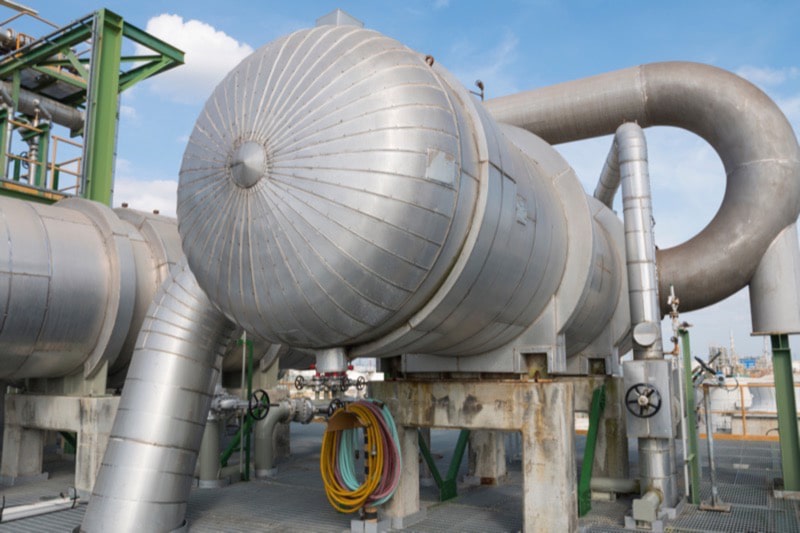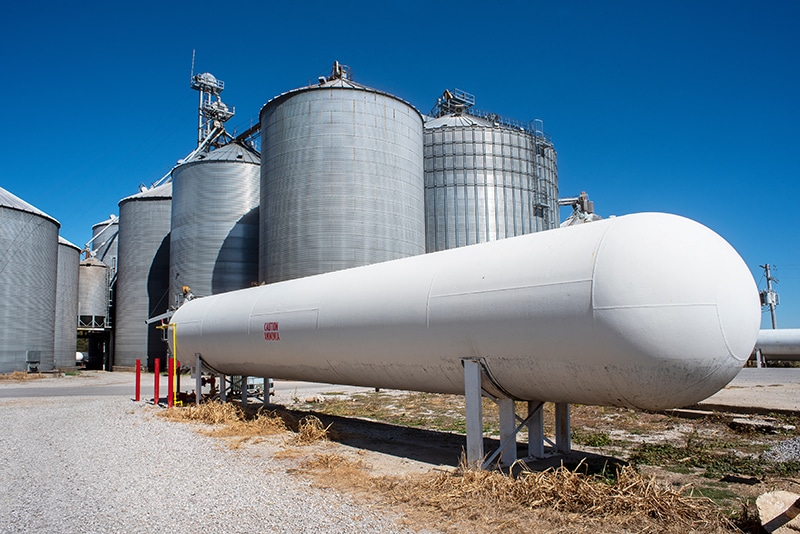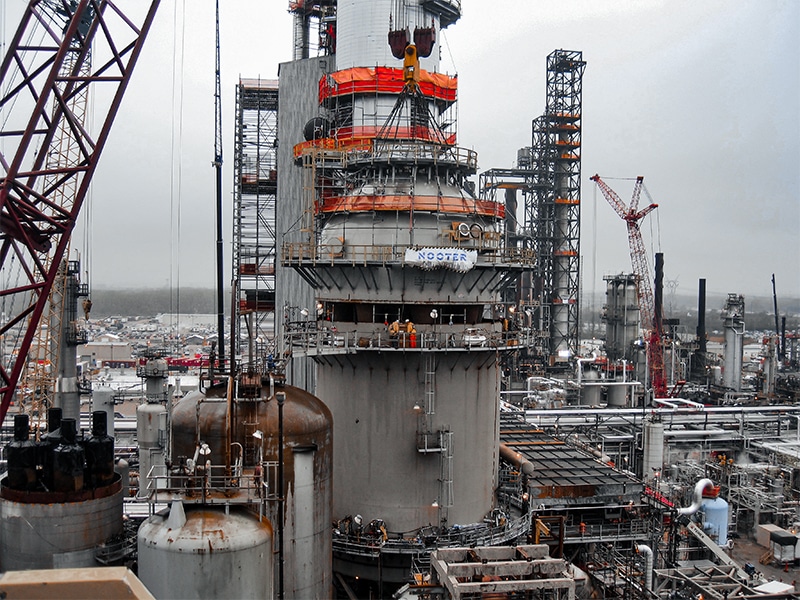The Pressure Vessel Guidebook
This blog will cover the basics of pressure vessels, where they are used, and the certifications needed to engage in inspections, fabrication, maintenance, and repairs.

What Is a Pressure Vessel?
Pressure vessels are tanks or vessels that are designed to hold liquids, vapors, and or gases at pressures above 15 psig or pounds per square inch. The materials used to create such vessels are dependent on what it will be used for.
The most common materials used in fabrication are:
- Carbon Steel
- Stainless Steel
- Nickel Alloys
- Aluminum
- Titanium
Depending on the application, pressure vessels must meet specific requirements for strength and corrosion resistance. A corrosion-resistant design is essential if the product is to be reliable in harsh environments.
A few things to note:
- It is necessary to consider the cost of materials, fabrication, and maintenance during the lifetime of a pressure vessel. In order to determine the material that yields the smallest cost, economic analyses are conducted.
- In order to create the pressure vessel geometry, metal sheets must be machinable and weldable. The internals of the vessel must be easily installed.
- Manufacturers must be able to access standard sizes of pressure vessel materials in their region.
- The terms pressure vessel and pressure tank are often used synonymously by people outside of the industry. It is important to note that these two are not the same. The primary difference being that a pressure tank’s Maximum Allowable Operating Pressure (MAOP) is 15 PSI, while a pressure vessel’s minimum MAOP is 15 PSI.

Storage Pressure Vessel

Heat Exchanger

Process Vessel
What Are the Different Types of Pressure Vessels and Where Are They Used?
There are many different kinds of pressure vessels, but we will name the most commonly used in the industrial world.
- Storage Vessels
- Heat Exchangers
- Process Vessels
Storage Vessels may include storing things like propane, ammonia, butane, chlorine, and LPG, to name a few.
The most commonly used vessel in the industries below is a Heat Exchanger. Heat Exchangers contain a series of metal tubes in which one product flows through these tubes while a second product flows around the tubes. This transfers the heat from one product to the other.
A process vessel is usually part of a production line where various tanks are used to process a product. Separation, heating, cooling, purification, blending, and other processes are performed by process vessels.
They are widely used in various industries such as:
- Petrochemical
- Oil and Gas
- Chemical
- Food Processing

Problems and Maintenance With Pressure Vessels
Due to the environment in which pressure vessels operate, they can crack or become damaged over time. Leaks and ruptures can occur as a result of cracked and damaged vessels.
There are a number of health and safety hazards associated with leaking vessels, including poisonings, suffocations, fires, and explosions. In the event of a rupture failure, there can be a great deal of damage to life and property.
Regular inspections and repairs are required to prevent untoward incidents. Performance may be affected if weak spots are ignored. A pressure vessel must only be inspected by certified professionals as they are able to identify weak areas.
For worker safety and health, they need to be designed, installed, operated, and maintained in accordance with applicable codes and standards. Generally, inspectors follow ASME standards when performing inspections.
What Standard, Codes, and Procedures Are Followed in Pressure Vessel Maintenance?
If you are fabricating or performing maintenance on pressure vessels, certain codes, standards, and procedures are to be followed.
Two of the leading standards for pressure vessels are ASME Section VIII and API 510.
ASME Section VIII has three divisions that focus on the following:
- Division 1 – Provides requirements applicable to the design, fabrication, inspection, testing, and certification of pressure vessels operating at either internal or external pressures exceeding 15 psig.
- Division 2 – Alternative Rules, provides requirements applicable to the design, fabrication, inspection, testing, and certification of pressure vessels operating at either internal or external pressures exceeding 15 psig.
- Division 3 – Alternative Rules for Construction of High-Pressure Vessels, provides requirements applicable to the design, fabrication, inspection, testing, and certification of pressure vessels operating at either internal or external pressures generally above 10,000 psi.
The API 510 (American Petroleum Institute) focuses on the following:
- Inspections
- Repairs
- Alterations
- Rerating activities for pressure vessels.
Nooter Has Been Providing Service to Pressure Vessels Since 1896
Nooter’s goal is to consistently deliver, and continually improve, value to our customers.
Since 1896, Nooter has built relationships and developed processes that translate the needs of customers into construction services that meet agreed requirements.
- Nooter is authorized by the American Society of Mechanical Engineers (ASME) for the manufacture and assembly of Power Boilers (“S” and “A”) and for the manufacture of Pressure Vessels (“U” and “U2”). Additionally, Nooter is authorized by the National Board of Boiler and Pressure Vessel Inspectors to Perform Repairs and alterations to power boilers and pressure vessels (“R).
- Project-specific quality programs are designed for each assignment, according to client, code, jurisdictional requirements and Nooter requirements. Quality programs are supported by job specific inspection & test plans.
- Nooter has thousands of qualified welding procedures covering all metals including stainless steel alloys, chrome alloys, titanium, nickel alloys, and aluminum.
- The Nooter Quality Management System is based on ISO9001
Get in touch with Nooter today if you need Pressure Vessel Repairs or Modifications!





